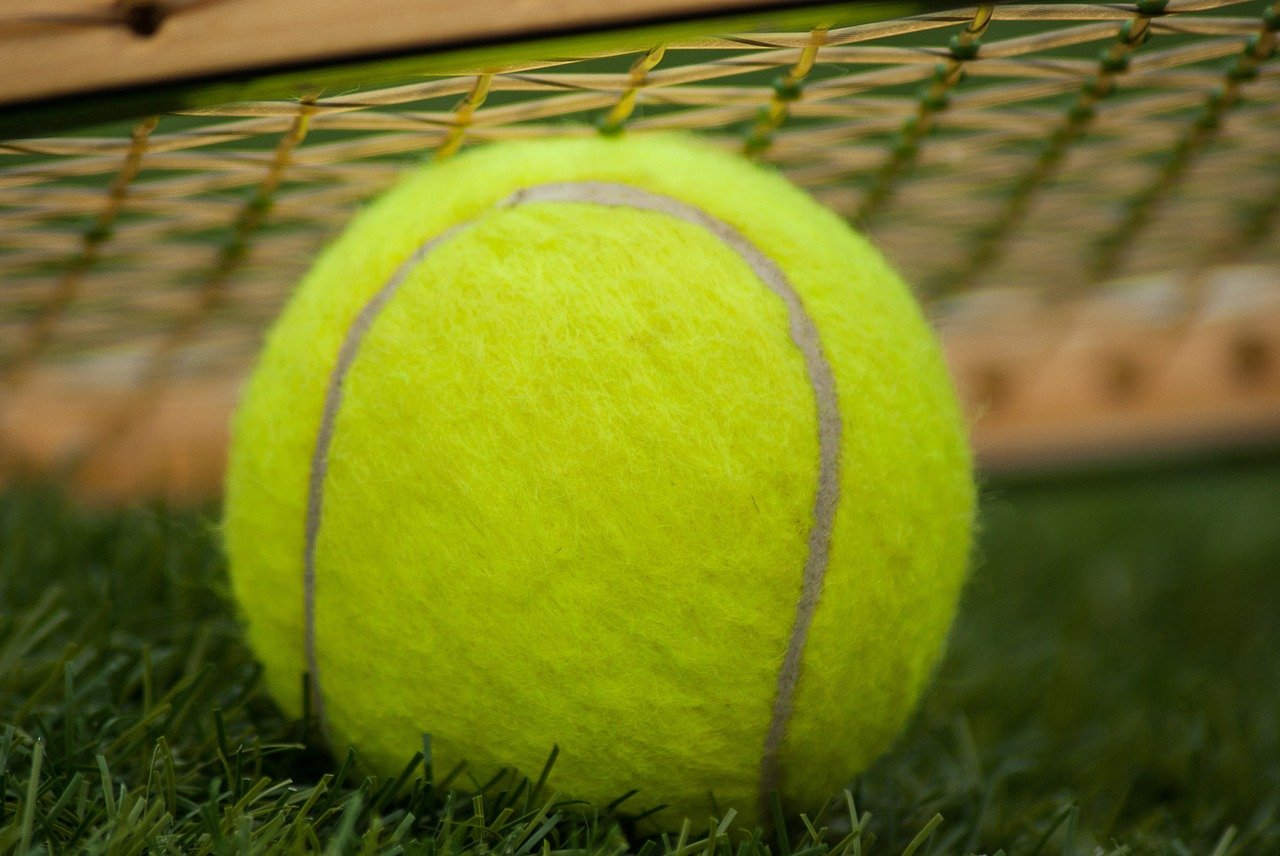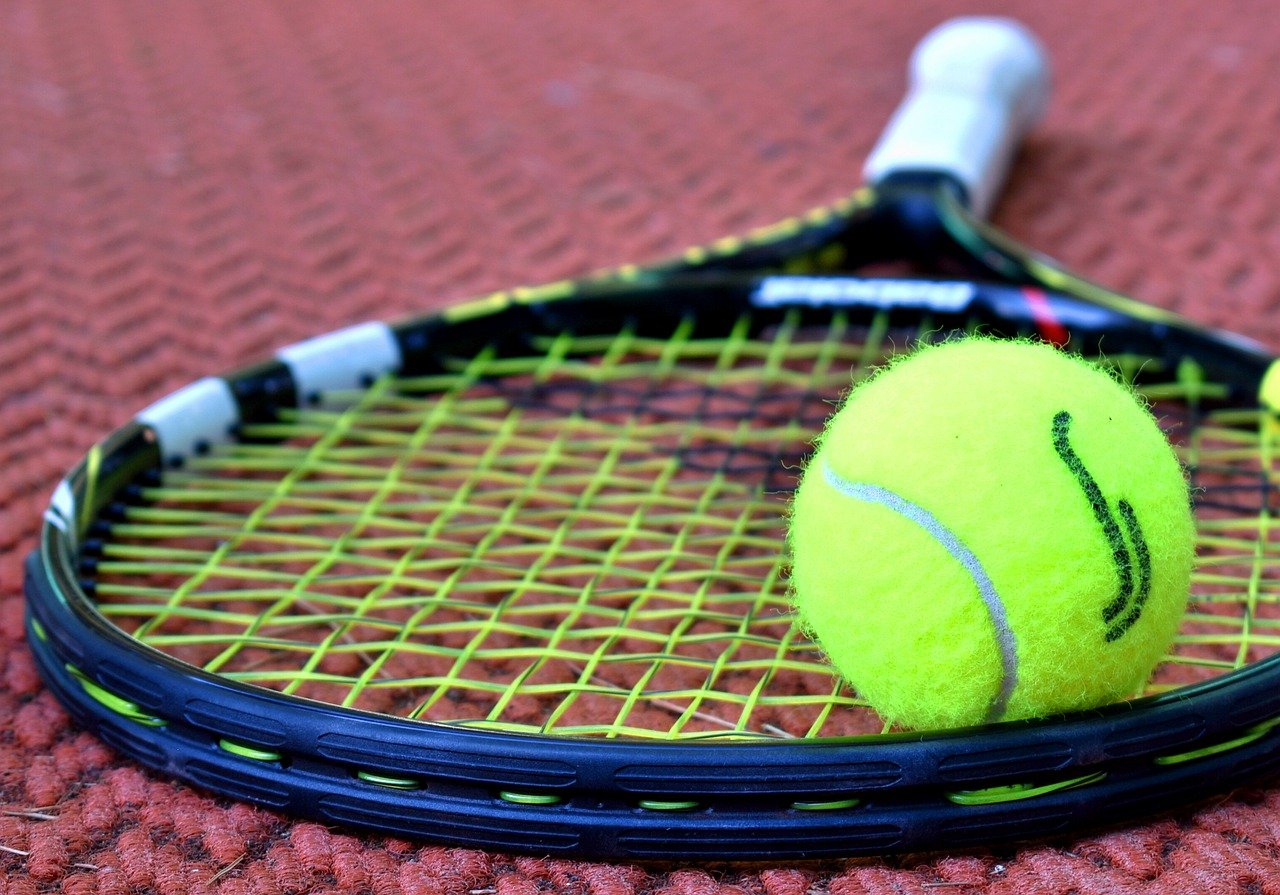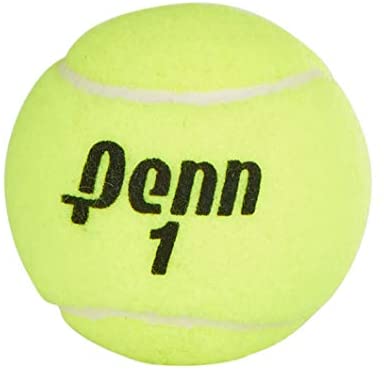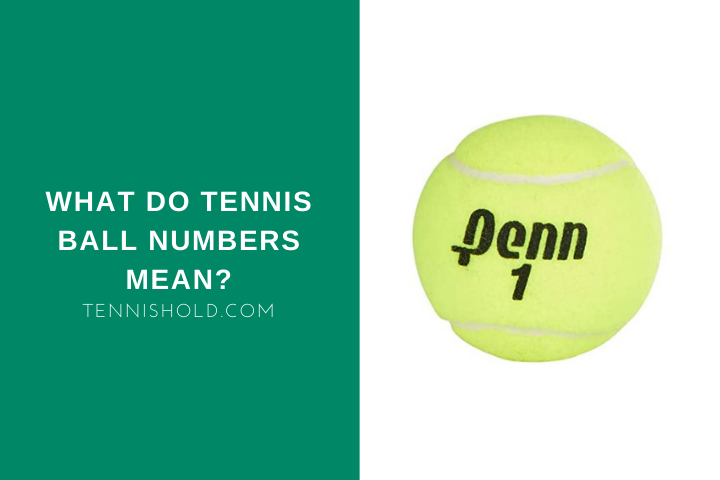If you’ve ever purchased a new can of tennis balls, you will no doubt have seen the markings on them. Of course, they will have the brand name first but a number on each ball as well in most cases.
The brand names are apparent. If you purchase a Wilson ball, it is there to identify it as a product manufactured by Wilson.
In addition, it also acts as a form of marketing for them, much in the same way as having a Nike swoosh on your shoe.
But what do the numbers on the tennis balls mean?
Tennis balls have numbers to identify the set they have come from. If a group of players uses two sets of balls, they can use the numbers to identify which set belongs to who. It can also be useful if your ball rolls onto another court.
In this article I will be covering:
- The reason tennis balls are numbered from one to four
- If the numbers on the balls relate to ball specifications
- The purpose of tennis ball numbers
It may not be the most important topic in tennis, but it is nonetheless interesting. Read on!
Why Are Tennis Balls Numbered From One To Four?

Manufacturers don’t usually mark the ball higher than the number 4.
This can be problematic because there is a 25% chance that if the people on the next court are using the same balls, they will have the same number.
I only remember seeing a ball marked with a number higher than 4. I don’t remember the brand, but it was an obscure one I hadn’t heard of before.
All mainstream brands such as Slazenger, Wilson, and Babolat will only mark the balls between 1 and 4.
The reason they only go to 4 is due to production costs. So there has to be a point when the manufacturers stop going up.
For most players, all they are looking for is a way to identify their tennis balls from those being used on another court.
If manufacturers were to continue up to, for example, 100, it would increase the cost of production.
This is because they would have to make an even larger variety. With just 4 numbers, it will not make a huge difference.
As there are many different brands and types of tennis balls, you will usually be fine.
The odds of the people on the court next to you playing with the same brand, ball type, and number as you are pretty slim.
Nonetheless, it does happen, especially if a particular ball is popular within a club.
At tournaments, the 1-4 can also identify the older balls.
The tournament organizer could use a collection of US open balls marked with a 1 for the morning matches. He could then switch to the 2s in the afternoon.
If the tournament organizer sees a 1 ball in the afternoon, he knows it is old and can take it off the court.
Do Numbers On Tennis Balls Relate It’s Properties?

The numbers written on the side of the ball have no relation to ball properties at all. It is solely there to help identify a set of balls.
The confusion that comes is how the ITF classifies ball types.
The International Tennis Federation puts balls into three categories:
- Type 1
- Type 2
- Type 3
These balls are divided based on their suitability for court surfaces and speed.
Type 1 is designed for slow court surfaces. An example of this would be clay.
Type 2 is for medium paces court surfaces such as hard acrylic.
Type 3 is used on fast-paced courts such as grass.
Even though these ball types are categorized by number, these have nothing to do with the numbers you see on the side of balls.
If you have a Wison US open ball with 1 written on the side, it does not mean that it is designed for slow surfaces.
The 1 on that US open ball identifies that it has come from the same batch as three other 1 balls.
The sole purpose is to help people identify who owns which set of balls if they roll onto another court.
As I said earlier, organizers of small tournaments could use 1 ball for the day session and 2 balls for the afternoon.
In this context, they would indirectly represent properties. But, again, this is because the numbers are being used to identify more worn out.
If you browse the tennis balls available at shops, you will notice that none of the adult yellow balls have numbers in the name. The only mention of numbers will be a 3 or a 4-ball set.
If dealing with junior tennis balls, you will see some referred to as stage 1, 2, or 3 balls. These refer to the type of ball being used.
Children playing with adult balls is training them to play unrealistically.
If you have a short 6-year-old playing with adult balls, they will have to be hitting most of the shots over their head.
If they use a red (stage 3) ball instead, they will be contacting the ball in relation to their body, the same way an adult would.
The 3 stages are designed to make tennis playable for everyone.
Stage 3 balls are red and bounce 75% slower than standard adult balls. Orange balls are referred to as stage 2, and they bounce 50% slower.
Stage 1 balls are green and bounce just 25% slower than adult balls.
As children progress through the stages, the court size increases too.
What Is The Real Purpose Of Tennis Ball Numbers?

The reason numbers on tennis balls became a thing is pretty simple. Players were losing balls and getting into arguments with others who owned which ball.
Even if players use the same brand and make of ball, having separate numbers should help identify them.
Of course, it is not foolproof. There is the chance that you could have the same brand, type, and number as those on the court next to you.
The odds of this happening are slim.
As a coach, I often have balls rolling onto my court. If I am unsure whether a ball is mine, I simply ask those on the court next to me which they are using.
They can simply say for example “Wilson US open 2”.
Also read: Can Tennis Balls Be Recycled?
Final Words
I didn’t realize quite how useful the numbers on the ball were until the end of the first covid lockdown.
To begin with, my club introduced a policy of only being able to touch your own tennis balls.
This meant that if I was playing singles, my partner and I would have to play with our own set.
I saw many other players drawing interesting designs on the balls to identify them.
I didn’t bother as I could just check that I had the correct number written on the balls.
I’m pretty sure tennis ball manufacturers didn’t predict the pandemic. Still, this little thing was pretty useful for the rule my club introduced.

